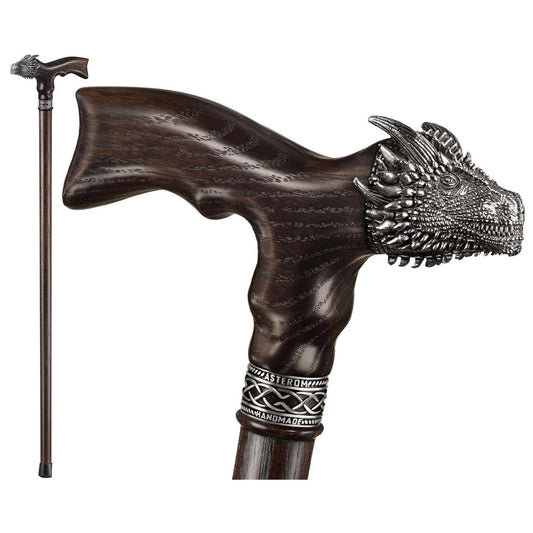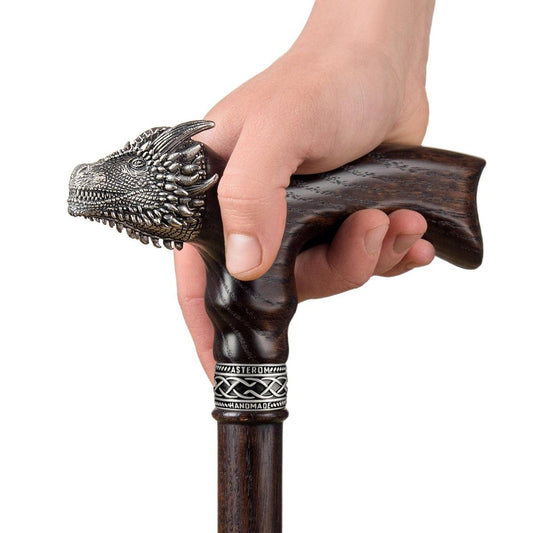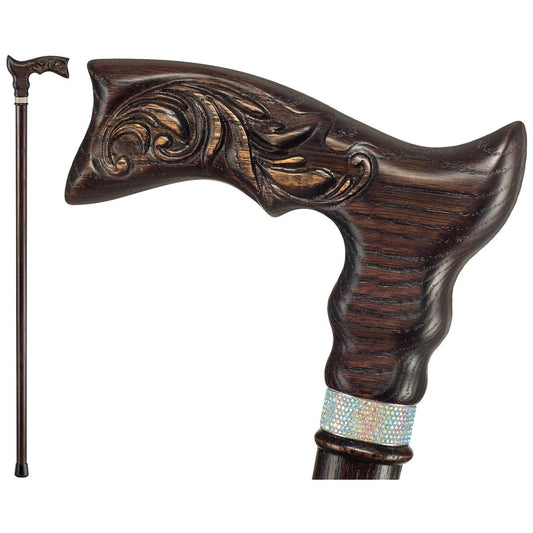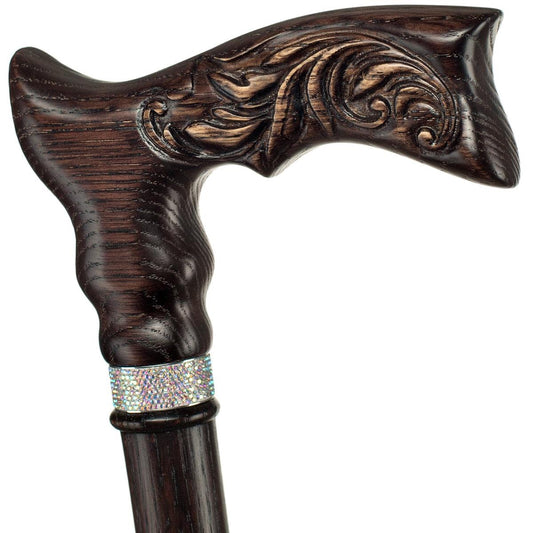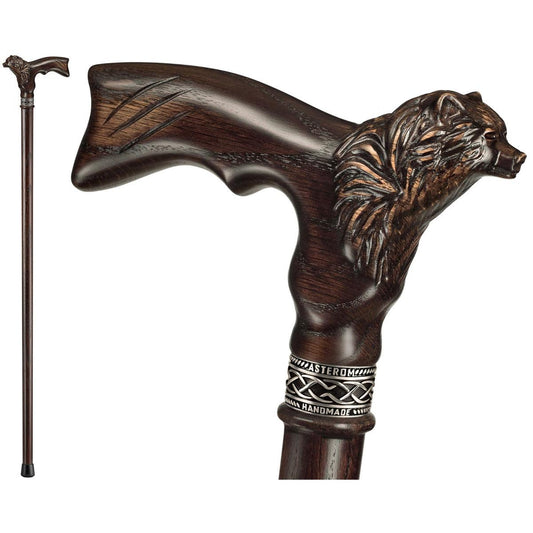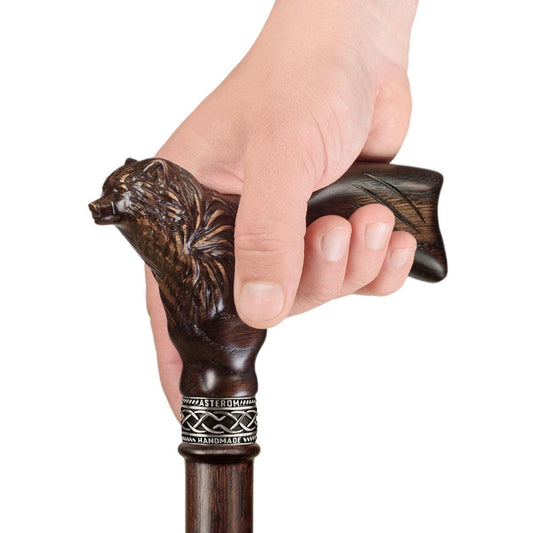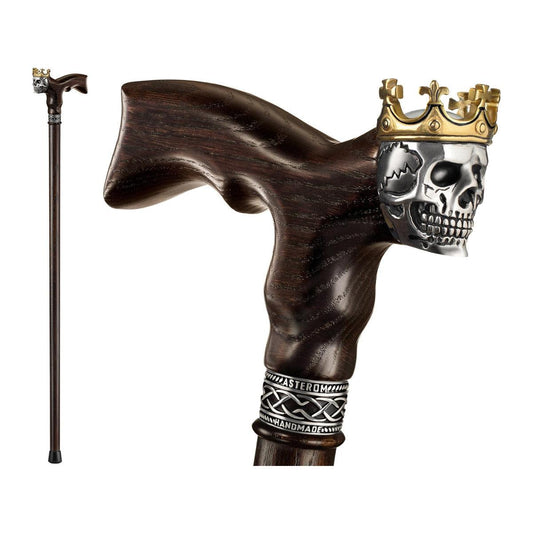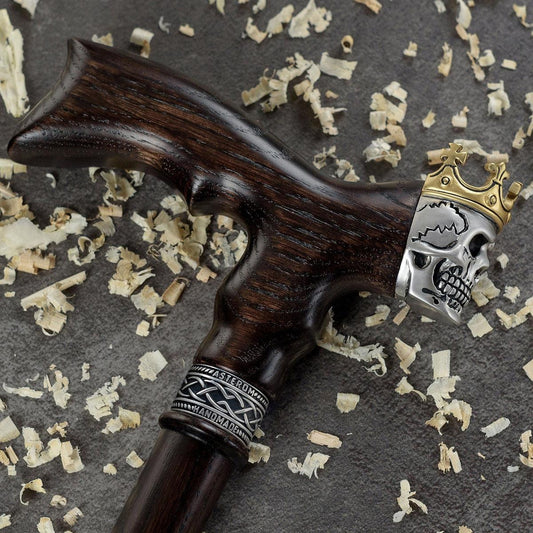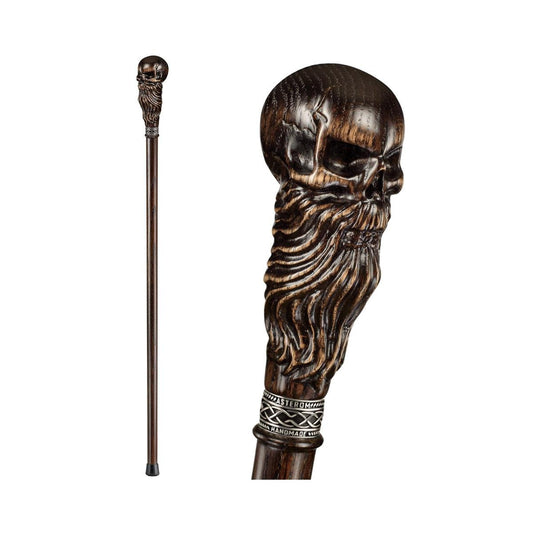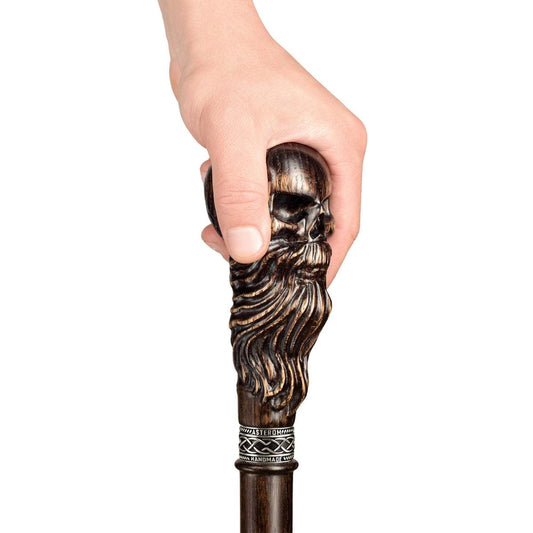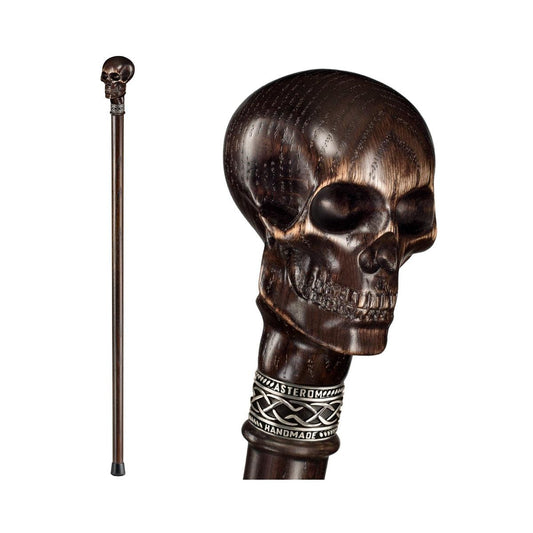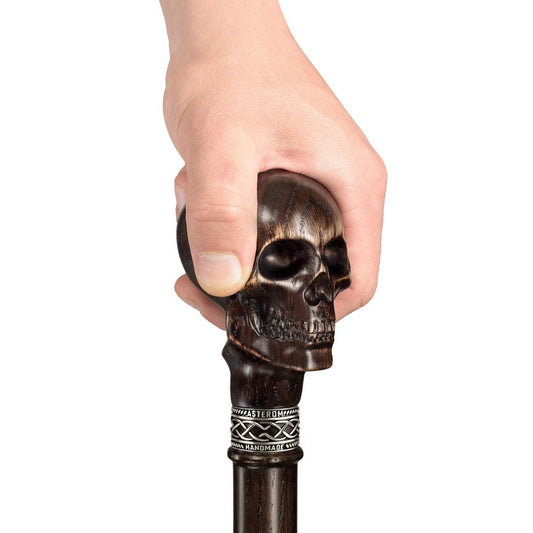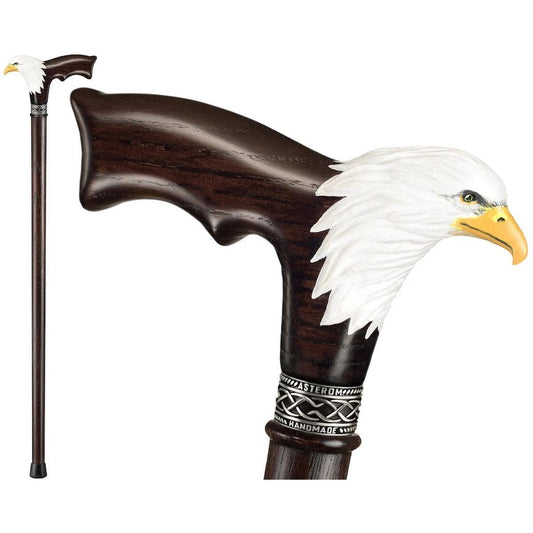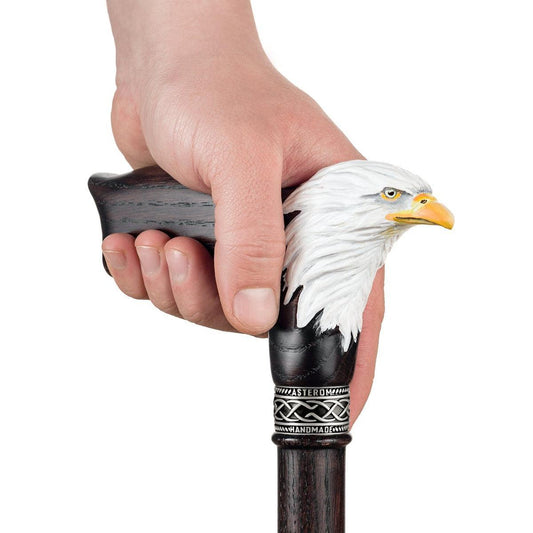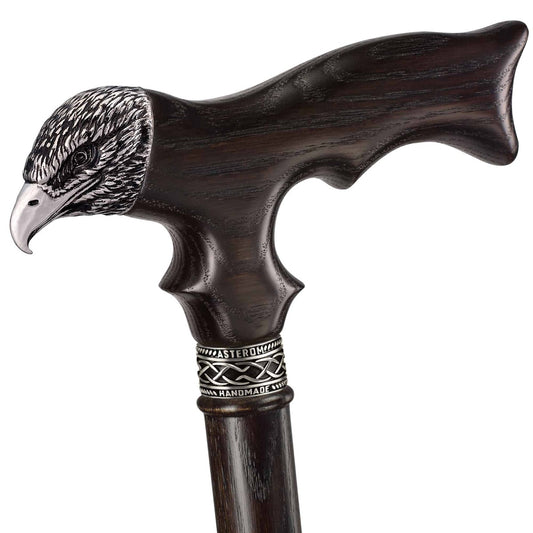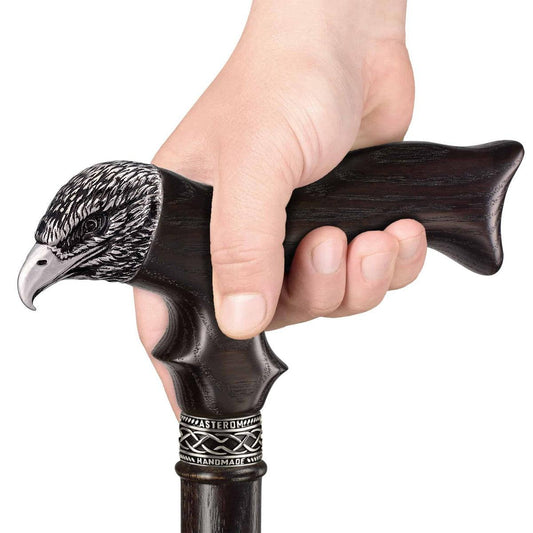Gentlemen, let me introduce you to the timeless accessory that combines style and functionality - the walking cane.
For many people, a cane is not just a tool to help with mobility but a fashion statement that reflects their unique style. However, selecting the perfect cane is not as simple as picking one up off the shelf.
It requires careful consideration and attention to detail, much like finding the ideal suit that fits you perfectly.
From the material and color to the handle and tip, every aspect of a cane can make a difference in its functionality and overall aesthetic appeal. Whether you’re looking for something classic and traditional or modern and trendy, there is a cane that perfectly complements your style.
Let us explore the world of canes together to find one that suits your style and requirements.
Specific Factors Men Should Consider When Choosing a Cane
When it comes to walking cane for a man, it’s not just about the style but also the support they provide.
Keep in mind that not all canes are created equal, especially when it comes to our personal needs. The cane you choose must be a perfect blend of functionality and aesthetics.
Therefore, it is not just about finding the one that catches the eye but also the one that feels right in the hand.
In that regard, you must consider factors like the cane’s length, grip, weight, and material of the cane before making a purchase. Only then can you ensure you get the proper support and style statement you deserve.
So, what should you, as a man, consider when picking out this essential accessory?
Ensuring A Firm Grip
When choosing the right walking cane, it’s important to remember that men often have larger hands than women. Therefore, a walking cane ideal for a lady may not be equally suitable for a gentleman.
Ideally, a grip that’s too small can cause discomfort or even strain, while a too-large grip can be similarly problematic. Finding the right balance is vital, just like when you shake hands with someone, and the grip has to be just right - firm but not too overpowering.
Therefore, it’s essential to consider the size and shape of your hands when selecting the grip to ensure that it feels comfortable and secure, allowing you to work efficiently and without any physical discomfort or injury.
Consider Weight Handling
Walking canes come with different weight capacities, and choosing one that comfortably supports you is crucial. It’s not just about durability but also about stability. A cane that’s not up to the task can be a safety hazard, and we certainly don’t want that, do we?
What’s The Right Material For A Walking Cane?
Walking cane material is a crucial factor. While wooden canes exude a classic charm, they might not be as adjustable as their aluminum counterparts. On the other hand, while lightweight and adjustable, aluminum canes might not offer the same aesthetic appeal as wood. Ideally, choosing the suitable material for your walking cane is a delicate balance of form and function.
Walking Cane Tip:
Lastly, let’s not forget about the cane’s tip. It’s the part that makes contact with the ground, and its quality can significantly impact stability. Look for canes with non-slip rubber tips, ensuring you have a firm grip on various surfaces, be it the polished floors of a ballroom or the rugged park paths.
Action Steps:
- Before stepping into a store or browsing online, list what you’re looking for in a cane. Is it just about mobility, or are you also considering it a fashion statement?
- Measure your hand size to know what grip size you’ll need. Most manufacturers provide these details, so keep them handy when shopping.
- Consider the environments in which you’ll be using the cane. You might opt for a cane with a more rugged tip if you’re outdoorsy.
- Don’t compromise on quality. While it might be tempting to go for a cheaper option, remember that a good-quality cane is an investment in your safety and comfort.

Standard Sizes and Designs Preferred by Men
In the world of canes, size does matter, and so does design. For the modern gentleman, a cane is not just a mobility aid—it’s an extension of his personality, a statement of his style.
So, let’s delve into the realm of sizes and designs that resonate with men, shall we?
What Determines The Right Walking Cane Size?
Getting the correct length for your cane or walker is essential for comfort and safety. According to the Health In Aging Organization, The proper size of a cane or walker is measured from the wrist to the floor.
The average cane length for men typically ranges between 36 to 39 inches. However, this is not a one-size-fits-all scenario.
An analogy relevant to the main topic of cane length would be that just like a tailor-made suit, a cane should be customized to fit the user properly. Just as a suit that is too tight or loose can cause discomfort, a cane that is too short or too long can lead to posture issues and pain. Finding the perfect fit for both your body and your cane is essential.
Choosing The Right Walking Cane Design For Men
The world of cane designs is as vast as the universe itself. However, certain styles have stood the test of time and are particularly favored by men.
With its elegant curve and ergonomic design, the Derby handle is a classic choice, offering both comfort and sophistication. The Fritz handle, often adorned with intricate carvings, is a popular choice for those who prefer a touch of regality. Finally, the Tourist or Crook handle, reminiscent of the shepherds of yore, exudes a rustic charm and don't forget about all the custom animal, face and creatures that are offered at stickyourcane.com. Our men's collection has some of the most unique and custom walking canes you will find.
But the design isn’t just about the handle. The shaft of the cane, too, plays a pivotal role in its overall appeal. The choices are endless, from sleek black to rich mahogany, plain to patterned. Some men even prefer canes adorned with symbols or logos that hold personal significance, turning a simple mobility aid into a piece of art.
Let’s not forget about the materials. While wood, with its timeless appeal, remains a favorite, modern materials like carbon fiber are making their mark, offering strength, durability, and a contemporary flair.
Action Steps:
- When determining the size, always measure twice. It’s better to spend a few extra minutes ensuring accuracy than to end up with an ill-fitted cane.
- Explore various designs before settling on one. Visit specialty stores or browse online galleries to understand what resonates with you.
- Consider the weight of the cane. While a heavy, ornate cane might look impressive, it might need to be more practical for everyday use.
- Personalize your cane. Whether it’s an engraving, a custom handle, or a unique pattern, make your cane truly yours.
- Always prioritize comfort over aesthetics. A beautiful cane that’s uncomfortable to use defeats its primary purpose. Remember, it’s a balance of form and function.

The Role of Strength and Posture in Determining Walking Cane Size
Let’s embark on a thrilling journey through the intricate relationship between strength, posture, and the perfect cane size - a dance that every proper gentleman must master to ensure ultimate mobility, comfort, and grace.
Why Strength Matters
Strength plays a pivotal role in determining the right cane size. Imagine wielding a cane that’s too heavy for prolonged periods—it would be akin to holding a weight during a marathon. Not the most pleasant of experiences, I assure you. A man’s grip strength, arm strength, and overall physical condition play a crucial role in determining the ideal weight and size of the cane. For instance, a gentleman with a robust build might prefer a sturdier, slightly heavier cane, while someone with a leaner physique might opt for a lighter, more agile model.
Getting The Correct Posture
Now, let’s talk posture. The spine’s alignment, the pelvis’s tilt, and the knees’ bend—all these factors influence the ideal cane length.
A walking cane that’s too long might force the user to tilt their shoulder, leading to discomfort and potential posture issues. Conversely, a cane that’s too short could cause one to hunch over, putting undue strain on the back.
The goal is to maintain a natural, upright posture, with the cane acting as a seamless arm extension, providing support without causing distortions.
But how does one strike the perfect balance between strength, posture, and cane size? It’s a blend of science and art, of measurements and instincts.
Frequently Asked Questions
How does grip strength influence cane choice?
Grip strength determines the type of handle and the weight of the cane one can comfortably wield. A firm grip might allow for a broader range of handle designs, while a weaker grip might necessitate an ergonomic handle for added comfort.
Can posture be corrected with the right cane?
Absolutely! A well-fitted cane can aid in maintaining an upright posture, reducing strain on the back and shoulders. However, if posture issues persist, it might be wise to consult a physical therapist.
How often should one reassess their posture and cane size?
It’s a good practice to reassess every couple of years or after significant physical changes, like weight loss or gain, surgery, or prolonged illness.
Action Steps:
- Take the time to assess your physical condition. Understand your strengths and limitations, and choose a cane that complements them.
- Stand in front of a mirror and observe your posture with and without the cane. Make adjustments as necessary.
- Consider consulting a physical therapist or an orthopedic specialist. Their expertise can provide insights into the ideal cane size and design for your unique needs.
- Experiment with different cane sizes and weights. Sometimes, the perfect fit is found through trial and error.
- Remember, the goal is comfort and support. Don’t compromise on these essentials in the pursuit of aesthetics or trends. Your well-being always comes first.
Expert Recommendations for Men of Different Heights and Builds
When it comes to walking canes, it is evident that a one-size-fits-all approach is unsuitable. Just as a tailor carefully constructs a suit that fits a man’s contours and dimensions, so must a cane be selected with precision, considering the individual’s height and build. Here is an expert’s analysis and recommendations to help you find the perfect match for any gentleman.
For the taller gents, a cane that’s too short can wreak havoc on posture, leading to a hunched stance and potential back issues. Experts recommend a cane length that allows the elbow to bend at a comfortable angle, typically around 15 to 20 degrees. This ensures that the cane reaches the ground without causing the user to stoop. For those towering above 6 feet, canes around 37 to 40 inches often prove ideal.
On the flip side, a cane that’s too long can be cumbersome for the more modestly statured men. It might force the arm to elevate unnaturally, leading to shoulder discomfort. Men below 5 feet 6 inches often find canes in the 29 to 34-inch range to be their perfect companions.
But height is just one piece of the puzzle. A man’s build—whether stocky, slender or somewhere in between—also plays a pivotal role. A robust gentleman might prefer a cane with a broader, sturdier base, offering enhanced stability. In contrast, someone with a leaner frame might opt for a more lightweight cane, ensuring ease of movement without compromising support.
Frequently Asked Questions:
How do I measure the ideal length of a cane for my height?
Start by wearing your regular walking shoes and standing naturally. Have someone measure the distance from your wrist joint to the floor. This measurement typically gives you the ideal cane length. To make sure you understand this measurement please refer to our guide on how to properly measure a walking cane height.
Does the type of handle matter for different builds?
Indeed, it does. A man with larger hands might find a derby or fritz handle more comfortable, while those with smaller or arthritic hands might prefer an ergonomic or palm grip handle.
I have a muscular build; does that affect my cane choice?
A muscular build often means more weight, requiring a cane to support that weight comfortably. Opt for a cane with a sturdy shaft and a broader base.
Action Steps:
- Measure twice, buy once. Before purchasing, ensure you’ve accurately measured your ideal cane length.
- Test different handles. Visit a store and get a feel for various handle types to determine which offers the most comfort and support for your hand size and shape.
- Consider your daily activities. A lightweight, durable cane might be ideal if you’re active and on the move. If stability is a primary concern, a cane with a broader base or even a quad cane might be the way to go.
- Seek expert advice. Don’t hesitate to consult with a physical therapist or orthopedic specialist. Their insights can guide you to the perfect cane for your height, build, and lifestyle.
- Remember, a cane is more than just a mobility aid—it’s an extension of you. Choose one that reflects your style, complements your build, and supports your every step with confidence and grace.

Real-life Experiences: Men Discuss Their Cane Choices
The stories of overcoming challenges, enduring hardships, and achieving success are truly inspiring! When selecting the ideal cane, who better to turn to than those who have already traveled the road?
Join us as we explore the authentic experiences of distinguished men from diverse backgrounds who generously share their cane journeys, providing valuable perspectives and recommendations,
Meet James, a 6-foot-4 former basketball player who initially struggled with finding a cane that catered to his towering stature. “Most canes I initially tried felt like children’s toys in my hands,” he chuckles. However, after some research and consultation, James found a custom-made cane that supported his height and resonated with his sporty personality. “It’s not just about the length,” James shares, “It’s about finding a cane that feels like a natural extension of yourself.”
Then there’s Raj, standing 5 feet 5 inches, passionate about vintage aesthetics. “I wanted a cane that echoed the elegance of the 1920s,” he says. After scouring antique shops and online stores, Raj stumbled upon a beautifully crafted wooden cane, perfectly sized for his stature. “It’s a conversation starter,” Raj beams, “and it’s as functional as stylish.”
And who can forget Samuel, a stocky gentleman with a penchant for adventure? “I needed a cane to keep up with my hiking and outdoor activities,” he explains. Samuel’s choice? A robust, adjustable trekking cane with a grip handle designed to navigate city streets and rugged trails.
Frequently Asked Questions:
How do men feel about adding personal touches to their canes?
Many gentlemen view their canes as both functional tools and fashion accessories. Personal touches, whether an engraved nameplate, a custom handle, or even a unique color, allow them to express their personalities.
Do men find adjustable canes more versatile?
The consensus varies. While some appreciate the flexibility of adjustable canes, especially if they switch between different shoe heights, others prefer the sturdiness of a fixed-length cane.
How important is the cane’s aesthetic for men?
As Raj’s story illustrates, aesthetics can play a significant role. A cane is not just a support tool; it’s an accessory that can complement one’s style and make a statement.
Action Steps:
- Reflect on your style and preferences. Your cane should resonate with who you are, whether sporty, elegant, vintage, or modern.
- Don’t shy away from customization. If you can’t find the perfect cane, consider getting one custom-made or adding personal touches to a store-bought one.
- Engage with a community. Join online forums or local groups where men discuss their cane choices. Their experiences can offer valuable insights and recommendations.
- Prioritize comfort and functionality, but don’t compromise on style. Your cane is an extension of you and should reflect that in every aspect.
- Remember, every gentleman’s cane journey is unique. Embrace the process, seek inspiration from others, and find a cane that genuinely feels like your own.

What are the key factors men should consider when choosing a cane?
Ah, a question close to my heart. When selecting a cane, Gentlemen consider its grip size, weight-bearing capacity, material, and the quality of its tip. It’s akin to choosing a fine wine—each element is crucial to the overall experience.
How does one’s strength and posture influence cane choice?
A dance of elegance, strength, and posture play pivotal roles. Your grip strength, arm strength, and overall posture determine the cane’s ideal weight, size, and design. It’s about ensuring the cane feels like a natural extension of your arm.
Are there expert-recommended canes for different heights and builds?
Absolutely! As a tailor would recommend a specific cut and fabric based on one’s physique, experts suggest cane lengths based on height and build. For instance, taller gents might prefer canes around 37 to 40 inches, while those of a more modest stature might find 29 to 34-inch canes ideal.
How do personal touches and customization play a role in cane selection?
Much like adding cufflinks or a pocket square to a suit, personal touches on a cane allow gentlemen to express their personalities. Whether it’s an engraved nameplate, a custom handle, or a unique color, these details turn a simple mobility aid into a statement piece.
In the world of canes, how important is aesthetics versus functionality?
A delicate balance, my dear reader. While aesthetics play a significant role, especially for the style-conscious gentleman, functionality remains paramount. After all, a cane’s primary purpose is support. It’s about marrying form and function in a harmonious dance.
Conclusion
Choosing the perfect cane for men combines functionality, style, and personal expression. It’s not just about physical support but also the statement it makes, the confidence it instills, and the stories it tells.
James, Raj, and Samuel have proven that a cane is much more than a mobility aid. It is an invaluable companion accompanying you on life’s journey, representing your resilience, and reflecting your unique personality and style. Whether you’re a towering figure like James or prefer a more traditional look like Raj, a cane is designed for you, waiting to be discovered.
But beyond the aesthetics and the functionality, there’s a deeper narrative at play. It’s about embracing one’s vulnerabilities, turning them into strengths, and striding forward with grace, elegance. It’s about understanding that every individual’s journey is unique, as is their choice of cane.
So, to all the gentlemen out there, remember that it's a journey of self-discovery as you embark on your quest to find the perfect cane. It’s about finding that ideal balance between support, style, necessity, and expression. As you take each step with your chosen cane, know that you’re not just walking with added support but with a renewed sense of purpose, pride, and panache.
Accessories and choices add to our life story. A walking cane represents resilience, elegance, and timeless charm. It’s more than just a tool, but a testament to one’s spirit and style.


